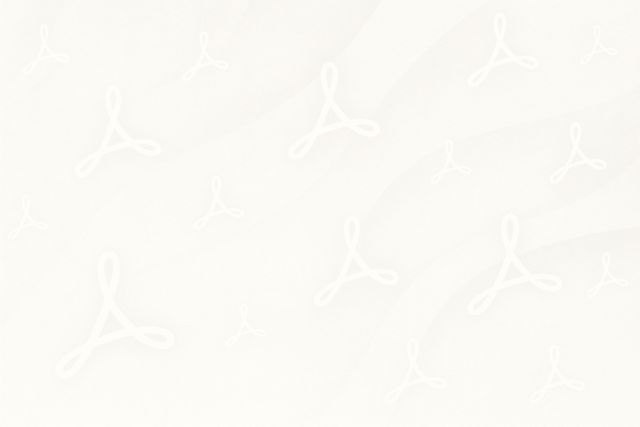Correcting Design Errors and Text in Microsoft Publisher 2013
Publisher gives you a number of tools to catch and correct the errors in your publication. These can be design errors or spelling errors. In this article, we're going to show you exactly how you can use these tools to keep your publications clean and consistent, and to avoid unseen issues that might derail your attempts to have them reproduced correctly by a commercial printer.
Check Your Spelling
Most of our modern devices check our spelling for us -- from iPods, to iPads, to personal computers, and smart phones. Publisher is no different. It's not as full-featured or as sophisticated as that of a dedicated word processor, such as MS Word, but it's more than capable. After all, the focus of Publisher is designing publications. You're probably not going to write that novel on it.
Just as in Word, you can find the spell check function on the Review tab. Let's look at it.

To check the spelling in a story (and remember, when we refer to a "story" in Publisher, we mean all the text in a single text box, or all the text threaded between several text boxes), select the story, then click the Spelling button. This will activate a dialog. The dialog looks like this:
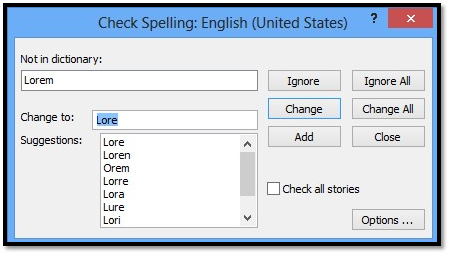
The process begins wherever the cursor is located. If the cursor is in the middle of a paragraph in the middle of a story, it will work its way to end of the story, then jump back to the beginning and eventually work its way back to where the cursor was originally located.
As the spell checker works its way through the publication, it will pause on misspelled words. In the example above, the dictionary didn't recognize the word "centre" and stopped on it. This is, of course, European spelling, and if you are writing for a European audience, you can choose to Add it to the dictionary, or choose to ignore it. You can use the Ignore All button to ignore every instance of the word "centre" in the story. (In a moment, I'll tell you how to choose another language.)
As you can see, Publisher tries to guess what you were getting at and automatically inserts what it thinks you were trying to say in the Change to box. If this is the wrong word, you can select a word from the list of suggestions by clicking on it, or you can manually type the actual word in the Change to box. To make the change, click the Change button. Use the Change All button to change every instance of the word in your publication to the new word.
Click the Check All Stories box to have spell checker go through every story in your publication.
To change options in the spell checker, either click Options in the Check Spelling window (as seen in the lower right corner of the illustration above), or go to the File tab, click Options, then Proofing.
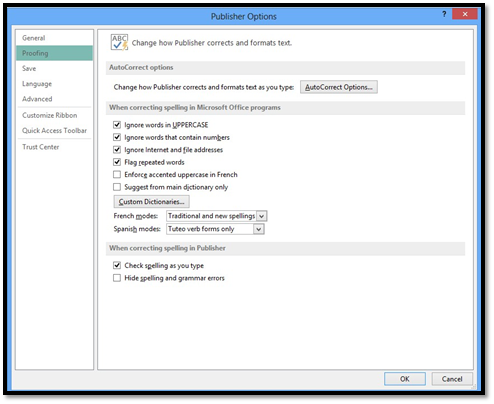
Here you can choose to ignore words in uppercase, or words that contain numbers, Internet addresses, etc.
Choosing the Check Spelling as you type option will underline in red any misspellings in your publication.
As we mentioned earlier, you may want to use British spellings. To do this, click the Custom Dictionaries button.
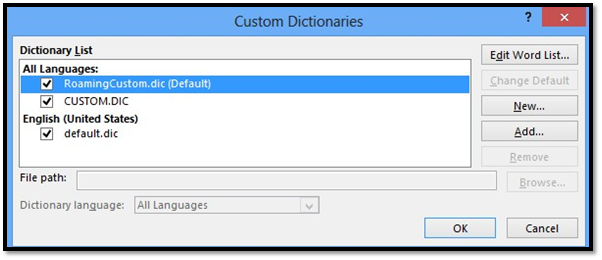
Choose a language in the Dictionary language drop down menu. Here you can create a new custom dictionary, or remove one.
To see or edit the words in any dictionary, including custom made ones, select the dictionary, then click the Edit Word List button. A new window will open that looks like this:
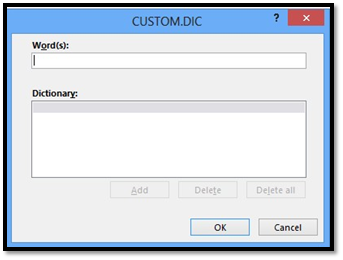
You can search through words using the Word(s) field, or scroll through them by clicking the Dictionary field and using your mouse wheel. Add new words by typing it into the Word(s) field. Select a word to delete it. Click OK when finished.
Use AutoCorrect
AutoCorrect works in tandem with spell checker, except that instead of just alerting you to typos and other common errors, it automatically fixes them. For instance, you might forget to capitalize the first letter of a sentence. Instead of having to go back and fix it (and interrupting your flow of thoughts), Publisher capitalizes it automatically.
Let's take a closer look at some of our options. To view them, go to the File tab and click Options. From the list on the left, click Proofing. Now click AutoCorrect Options.
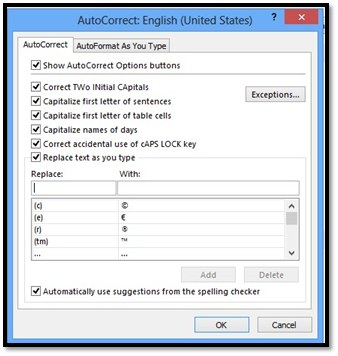
As you can see in the above illustration, Publisher will correct two initial capitals. This is actually a common error, especially for very fast touch-typists. They hold that shift key for a fraction of a second longer than they should. Publisher can also capitalize the first letter of sentences, as we said earlier, or the first letter of table cells, names of days, etc.
Now look at the window near the bottom. Here is a list of keystrokes that Publisher will replace and what it will replace them with. For instance, (c) will be replaced with the copyright symbol ©. This is also where you can create custom replacements.
Sometimes Publisher will automatically correct something you don't want it to. To correct this, click the Exceptions button.
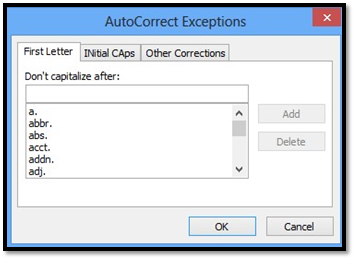
Here you can see stock exceptions and add your own. Click OK when finished.
Use Design Checker
You might be tempted to dismiss Design Checker as something similar to spell checker. Don't. Publisher does not look at your publication from an aesthetic standpoint. It won't say something like, "You have an image over here, and it should be over there to create a sense of balance;" or "Your headlines are in blue, they should be in black."
Instead, Design Checker points out potential errors that could mean your publication won't print correctly.
To find the Design Checker button, go to the File tab and click the Info group. This is what it looks like:

When you click this button, Publisher returns you to your publication, where a pane opens on the right.

If there were any potential issues in our publication, Publisher would show it here. These are not necessarily bad things, or things that should be changed. You may, in fact, have had your reasons to do things the way you did. You do not have to act on any of the potential errors--Publisher is just pointing them out to you.
Click on any item listed in the design checker pane to jump to the error's location in your publication.
At the top of the Design Checker pane are boxes you can check to change the parameters. You can have Publisher make general design checks, commercial printing checks, website checks, or email checks.
To change Design Checker options, click the Design Check Options button at the bottom of the pane. A new window will open.
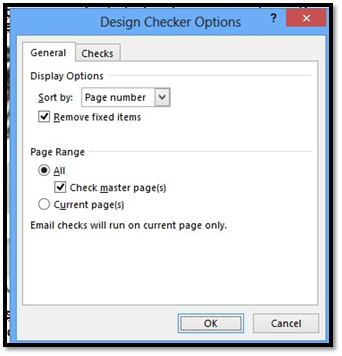
From within this window, you can sort the design issues by description, page number, or status (either fixed or unfixed). If you'd like to see only the uncorrected issues, check the Remove Fixed Items box. You can also choose to include or exclude master pages.
Clicking the Checks tab takes you to a new set of options.
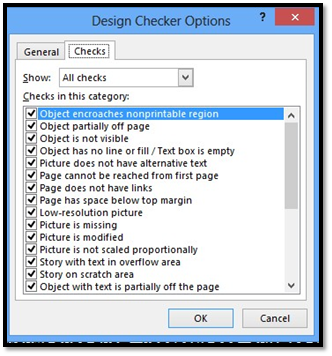
Here you choose which potential errors Publisher should look for. All items are checked by default, but you can exclude items by clicking on an item to uncheck it.
Use and Format Tables
About Tables
If you've ever seen a spreadsheet, or used a program such as Excel, then you're probably pretty familiar with tables. That's all tables are, after all -- simply a grid arranged into columns and rows. You can use them to organize and emphasize certain pieces of information. More than that, you can use tables to do complex page layout operations that almost rival expensive professional publishing programs like Adobe InDesign.
Inserting Tables
Before we identify the different parts of a table, let's go ahead and insert one into our publication.
You'll find tables under the Insert tab in the Tables group. The Tables button looks like this:

Click the Tables button.
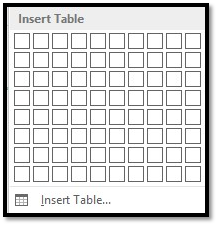
You'll see a bunch of boxes at the top.
The easiest way to insert a table is to drag your mouse over the rows and columns until you have the amount you want.
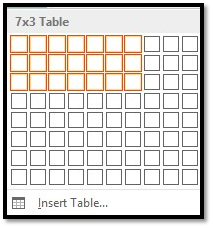
As you can see above, we dragged our mouse to make a table that has seven columns and three rows, or 7 x 3. As we drag, the table appears in our publication. Click to add the table.
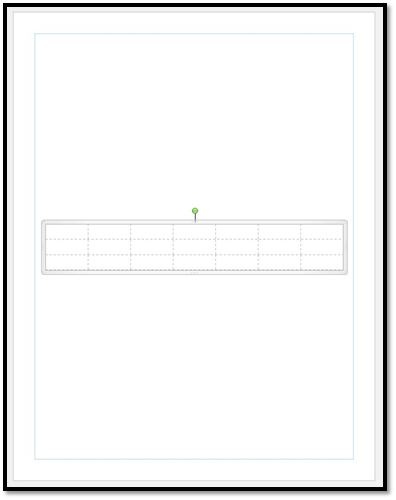
We now have a basic table. So let's identify the parts.
Each box you see in a table is called a "Cell." There are 21 cells in the table above.
The "Rows" go from top to bottom. There are three rows. Rows go horizontally across the screen.
Columns go from left to right. There are seven columns above. Columns are vertical.
So now that we've identified the parts of a table, let's take a look at the other ways in which we can add them.
Using the Insert Table Dialog
Once again, we're going to add a table, but this time we're going to use a different method. Go back to the Insert tab, click the Table button, and select "Insert Table" instead of dragging your mouse over the boxes (which really represent cells, as we just learned.)
A dialog launches in the center of your screen. It looks like this.
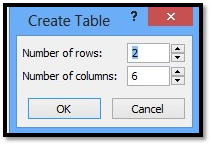
From here you can select the number of rows and columns. In this example, we are going to add six columns, and.two rows.
Click OK.
Adding Text to a Table
Adding text to a table is as easy as clicking into a cell and then typing.

You will be able to change any attributes of that text, too, and even apply a WordArt style, which adds effects to the text. You'll find quick styles in the Tables Design tab that appears when you add a table.

Position Text Within a Cell
Just as in an ordinary publication, you can choose whether to center text within a cell, or whether to align it right or left, or toward the top or the bottom. Go to the Alignment group under the table Layout tab. This tab appears beside the Design tab.

You'll use these buttons:
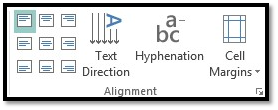
As you can see, you can align text to the left, center, or right of a cell. You can also align it to the top, middle, and bottom of a cell. You can also change text direction, add hyphenation, or adjust the margins within individual cells. You should be familiar with the buttons above. They work the same way that they do in text boxes, except they are for individual cells.
Formatting Tables With the Table Tools
Whenever you create or select a table, the Table Tools will open automatically over the Design and Layout tabs in the tool bar. It allows you to easily apply table styles, borders, shading attributes, and more.

The Design tab (shown above) lets you customize the look and appearance of your table.
Let's look at the Table Formats group.
You can format your table using one of the pre-designed Publisher formats. Click the downward arrow to see all formats available. These formats will establish the look and feel of your table.
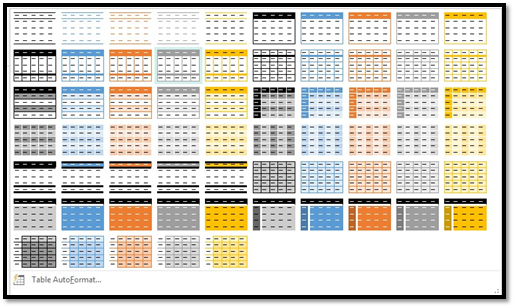
Click the Fill button to add a fill color to your table. We've added a gray fill color to ours.

Add a fill color to the entire table by first selecting the table.
In the Borders group, you can use Border Styles and add borders to rows and columns to customize the look of your table.
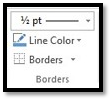
Now, let's click the Layout tab.

The Layout tab, when associated with the Table Tools, allows you to easily insert rows and columns, and to format text and objects within cells. You can also create new margins for your cells.
Selecting Cells, Rows, and Columns
Selecting cells, rows, and columns in Publisher 2013 is easy.
To select a cell, click within the cell so the mouse cursor is blinking.
Go to the table Format tab, then the Table group. Click Select>Select Cell
To select a row, click in the first cell in a row go to Select>Select Row.
To select a column, click the first cell in a column, then go to Select>Select Column.
Adjusting the Width of Individual Columns
To adjust the width of individual columns, position your mouse pointer over the edge of the column and then drag it to the desired width.
Adding Rows and Columns
There are two ways to add a new row or column to a table.
Select a cell, row, or column. Go to the Layout tab. Choose an option from the Rows & Columns group.
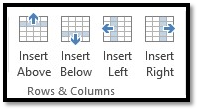
Deleting Cells, Rows, or Columns
You can delete cells, rows, and columns by right-clicking inside a cell. In the menu, select Delete. Click the appropriate command and click Ok.
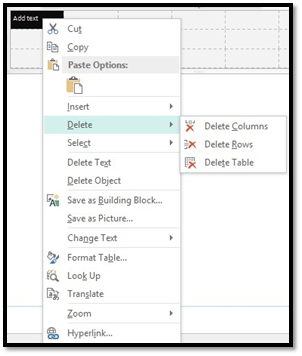
Merging Cells and Splitting Cells
To merge cells, drag your mouse over the cells while holding the left mouse button to select them.

As you can see above, the first two are selected.
In the Layout tab, select the Merge Cells button from the ribbon.

To split a cell, select it by clicking on it, then click the Split Cell button on the ribbon.

This button is also found in the Merge group.
Add Diagonals
You can also add diagonal lines through cells. When you do this, you can type in each section of the cell, above and below the diagonal line. To do this, select a cell, group of cells, or the entire table.
Go to the Layout tab. Click the downward arrow.
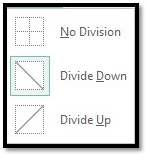
Choose to either Divide Down, or Divide up.
We chose Divide Down.

As you can see in our table below, we can now type above and below the diagonal line.

Deleting a Table
There are two ways to delete a table in Publisher. You can select any cell in the table, then click the Delete button on the Layout tab and click Delete Table.

Another way to delete a table is by right-clicking on it and selecting Delete > Delete Table. You can also right-click on it and choose Delete Object. This way removes the table from your publication just as it would any other object, such as a photo or WordArt.















